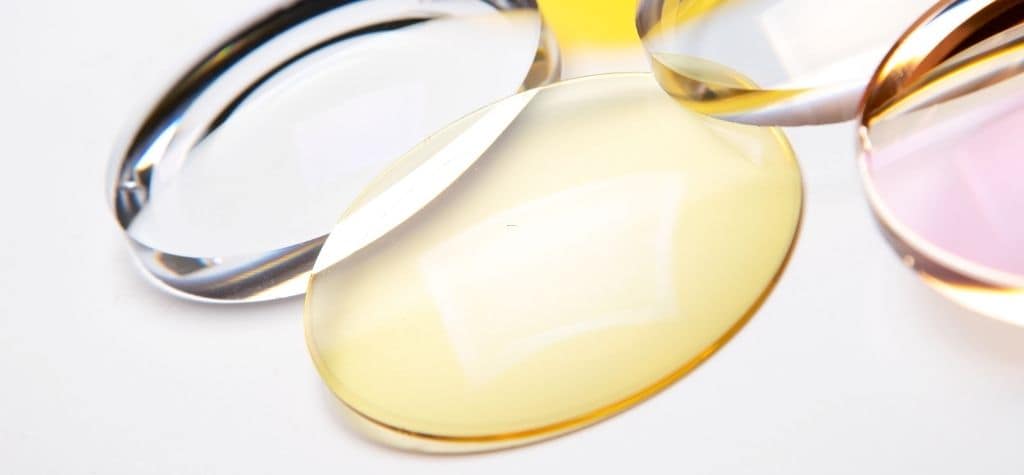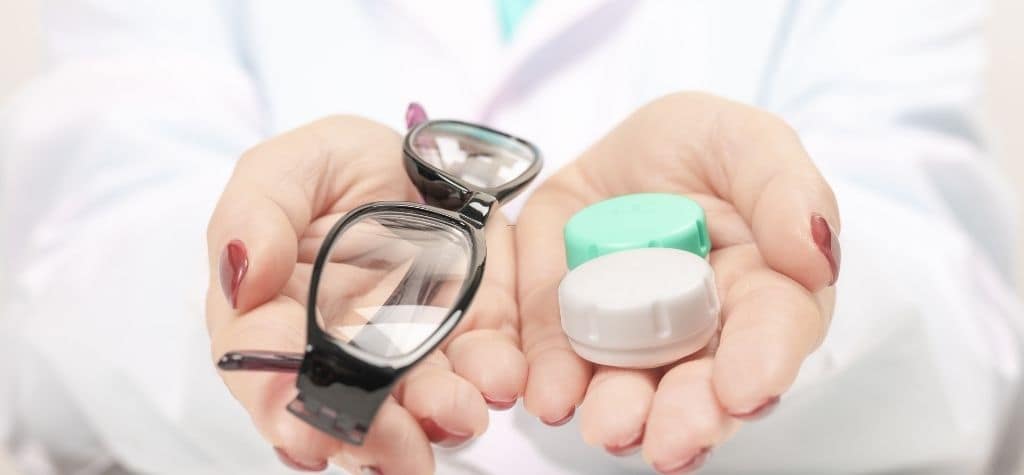Understanding the Environmental Impact of Contact and Eyeglass Lenses

In a world where convenience reigns supreme, contact lenses and disposable eyeglass lenses have become essential tools for millions. However, beneath their practicality lies a growing environmental concern. These lenses are made from various plastics—such as polymethyl methacrylate (PMMA) and silicone hydrogel—that do not break down easily. Each year, billions of lenses are sold, used, and thrown away, silently contributing to plastic pollution.
What most users don’t realize is that the materials used in these lenses are designed to be durable and resistant to bodily fluids—great for your eyes, but terrible for the earth. Once discarded, they can remain in the environment for hundreds of years, fragmenting into microplastics that infiltrate ecosystems.
What Happens to Discarded Lenses?
Most people dispose of used contact lenses by flushing them down the sink or toilet. Unfortunately, this practice causes lenses to bypass waste treatment facilities and enter oceans and rivers. Eyeglass lenses and frames, when discarded improperly, end up in landfills, where they can persist for generations.
Research has shown that flushed lenses break into microplastics that marine animals ingest, entering the food chain and ultimately, our bodies. Each small lens may seem insignificant, but multiply that by millions of users daily, and the scale of waste becomes alarming.
Why Plastic Waste from Lenses Is Overlooked
Plastic lens waste often flies under the radar because of its size and invisibility. Unlike a plastic bottle or bag, lenses are tiny, clear, and often flushed or mixed with regular garbage. There’s also a widespread lack of awareness among consumers about their environmental impact. Many believe lenses are biodegradable because they’re used in a medical context, but that’s far from the truth.
Educational campaigns around proper disposal are rare, and recycling programs for optical materials are even rarer. As a result, even well-meaning consumers contribute to pollution without realizing it.
Hidden Dangers of Flushing Contact Lenses
Flushing contact lenses is a silent polluter. Wastewater treatment facilities are not equipped to filter out these tiny, flexible plastics. Once in the water system, they break into microscopic particles that are easily ingested by fish and aquatic creatures.
Over time, these plastics can accumulate in the bodies of animals, affecting reproductive systems, disrupting hormones, and even making their way back to humans through seafood consumption.
Eyeglass Frames and Lenses: A Dual Threat
It’s not just contacts—eyeglass lenses made of polycarbonate or other thermoplastics also present a problem. Frames, often made of acetate or metal-plastic hybrids, add bulk to landfill waste when discarded. Because these materials are tough and chemically resistant, they don’t decompose easily, making them another form of long-term pollution.
Are Biodegradable or Eco-Friendly Lenses Real?

As environmental awareness grows, companies are exploring alternatives to traditional plastic lenses. Recent innovations include the use of bioplastics like polylactic acid (PLA) or polyhydroxyalkanoates (PHA), which offer the promise of biodegradability. Some contact lens manufacturers are piloting lenses made with reduced plastic content or recyclable blister packs.
However, these products are still in early stages. Availability varies by region, and many are limited to niche markets or require special disposal methods. While not yet mainstream, the push toward sustainable lens materials is gaining momentum and shows promise for the future.
How the Lens Industry Is Addressing Plastic Waste
Eyewear companies are increasingly aware of their environmental footprint. Many brands have started implementing eco-conscious practices, such as:
- Switching to recyclable or compostable packaging
- Offering take-back programs where customers return used lenses and packaging
- Launching green product lines made from recycled ocean plastic or sustainable materials
Big names in the eyewear industry are also partnering with environmental organizations to promote recycling awareness and reduce global lens waste.
Brands Leading the Eco-Friendly Movement
Several companies are setting new standards for sustainability in vision care. Examples include:
- Acuvue’s TerraCycle program, which allows customers to recycle used lenses and packaging at drop-off points.
- Parafina and Eco Eyewear, which make eyeglass frames from recycled plastic bottles and biodegradable bamboo.
- Sea2See, a brand that collects ocean plastic and transforms it into stylish, durable frames.
These pioneers are changing the way we think about eyewear—proving it’s possible to see clearly without harming the planet.
The Role of Consumers in Reducing Lens Waste
Individual actions matter. As a lens wearer, you can reduce your environmental impact by:
- Never flushing lenses down the toilet or sink
- Using take-back or recycling programs
- Extending the lifespan of eyeglasses by opting for repairs instead of replacements
- Choosing daily lenses only when necessary, as these contribute more to waste
- Opting for sustainable brands when purchasing new eyewear
Making informed decisions can significantly decrease the plastic waste generated by your lens use.
How to Recycle Lenses the Right Way
Recycling lenses isn’t as simple as tossing them in the blue bin. Contact lenses are too small for standard recycling and must be collected through special programs like:
- TerraCycle’s Bausch + Lomb ONE by ONE program, which accepts all brands of lenses and blister packs
- Mail-back recycling kits, often available from optometrists or online retailers
- In-store drop-offs at participating vision care centers
Unfortunately, most curbside programs reject these materials, so always use dedicated recycling channels.
Comparing the Footprint: Contacts vs. Glasses vs. LASIK

Let’s break down the environmental impact of different vision correction methods:
| Method | Plastic Waste | Longevity | Recyclability | Overall Footprint |
|---|---|---|---|---|
| Contact Lenses (Daily) | High | 1 day | Low | High |
| Contact Lenses (Monthly) | Moderate | 30 days | Low | Medium |
| Eyeglasses | Moderate | 2-5 years | Moderate | Medium |
| LASIK Surgery | None (post-op) | Lifelong | N/A | Low |
Though LASIK has a higher initial cost, it may offer a more sustainable long-term option by eliminating the need for physical lenses altogether.
Innovative Alternatives to Traditional Plastic Lenses
The industry is buzzing with innovations aimed at reducing environmental impact:
- Recycled lens materials from old glasses
- 3D-printed frames and lenses using bio-based polymers
- Smart glasses with extended usability that minimize replacement needs
These solutions not only lower plastic waste but also push the boundaries of what eyewear can do—merging sustainability with smart functionality.
Eye Health vs. Environmental Health: Finding the Balance
It’s important to remember that your vision health comes first. However, you don’t have to sacrifice the environment to see clearly. Striking a balance means:
- Working with optometrists who support eco-friendly options
- Choosing multi-use products over disposables when feasible
- Researching brands before you buy
Ask your eye care provider about sustainable solutions and whether your prescriptions allow for greener choices.
Policy and Legislation on Plastic Lens Waste
While still limited, there are increasing calls for regulations on plastic waste from medical products, including contact lenses. Some countries are:
- Proposing mandatory take-back programs
- Banning non-recyclable packaging
- Requiring eco-labeling on consumer medical products
International collaborations between healthcare companies and environmental agencies are also pushing for stronger waste management standards for lens materials.
Future Outlook: A Greener Vision Industry by 2030

Looking ahead, sustainability is poised to become a central theme in eye care. By 2030, we can expect:
- Wider adoption of biodegradable lenses
- Fully circular systems for eyeglass frame recycling
- New materials that combine performance with eco-friendliness
- More transparency from brands regarding their environmental practices
Consumer pressure and technological advancements are driving this transformation toward a greener, cleaner lens industry.
FAQs About Lens Waste and Sustainability
1. Can contact lenses be recycled in regular bins?
No. They’re too small and flexible. Use special programs like TerraCycle.
2. Are there fully biodegradable contact lenses available?
Not widely yet, but several companies are developing biodegradable or partially compostable options.
3. What should I do with old eyeglasses?
Donate them to charities, reuse the frames, or recycle them through optometry clinics.
4. Is LASIK more eco-friendly than wearing lenses?
Yes, over time. It eliminates the need for plastic lenses and packaging.
5. Do all optical brands offer recycling options?
Not all. Look for those that partner with environmental programs or explicitly state eco-initiatives.
6. How can I reduce waste if I must use daily lenses?
Always recycle the blister packs, avoid flushing lenses, and consider switching to monthly lenses if suitable.
Final Thoughts: Seeing Clearly Without Polluting
Our eyes deserve the best—but so does the planet. Whether you wear contact lenses, eyeglasses, or explore surgical options, being aware of your environmental footprint is crucial. By making informed, mindful choices—like recycling properly, choosing sustainable brands, and avoiding harmful disposal practices—you can enjoy crystal-clear vision while contributing to a cleaner, healthier Earth.
Let’s look forward to a future where seeing better also means living better—for ourselves and the planet.

